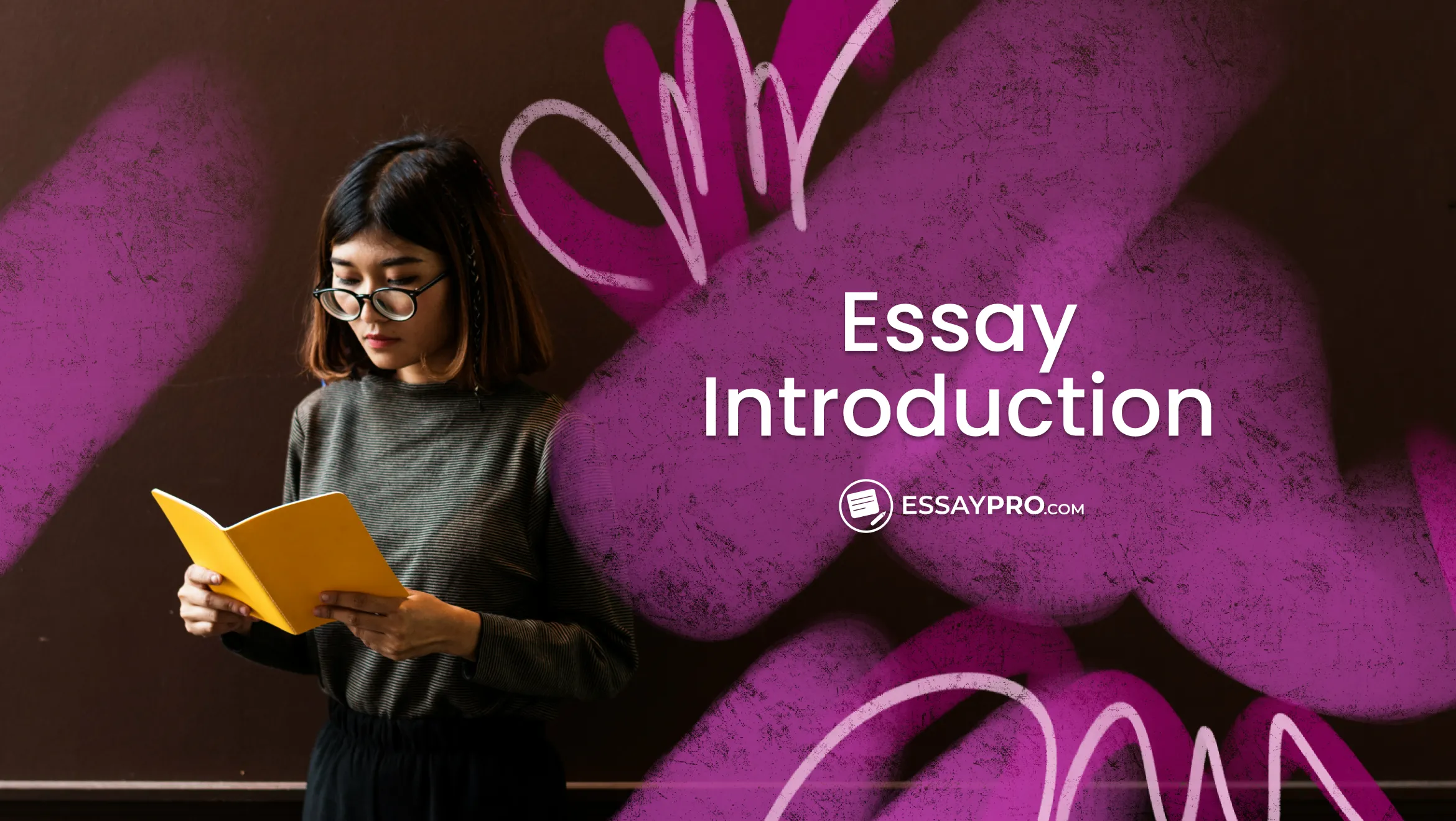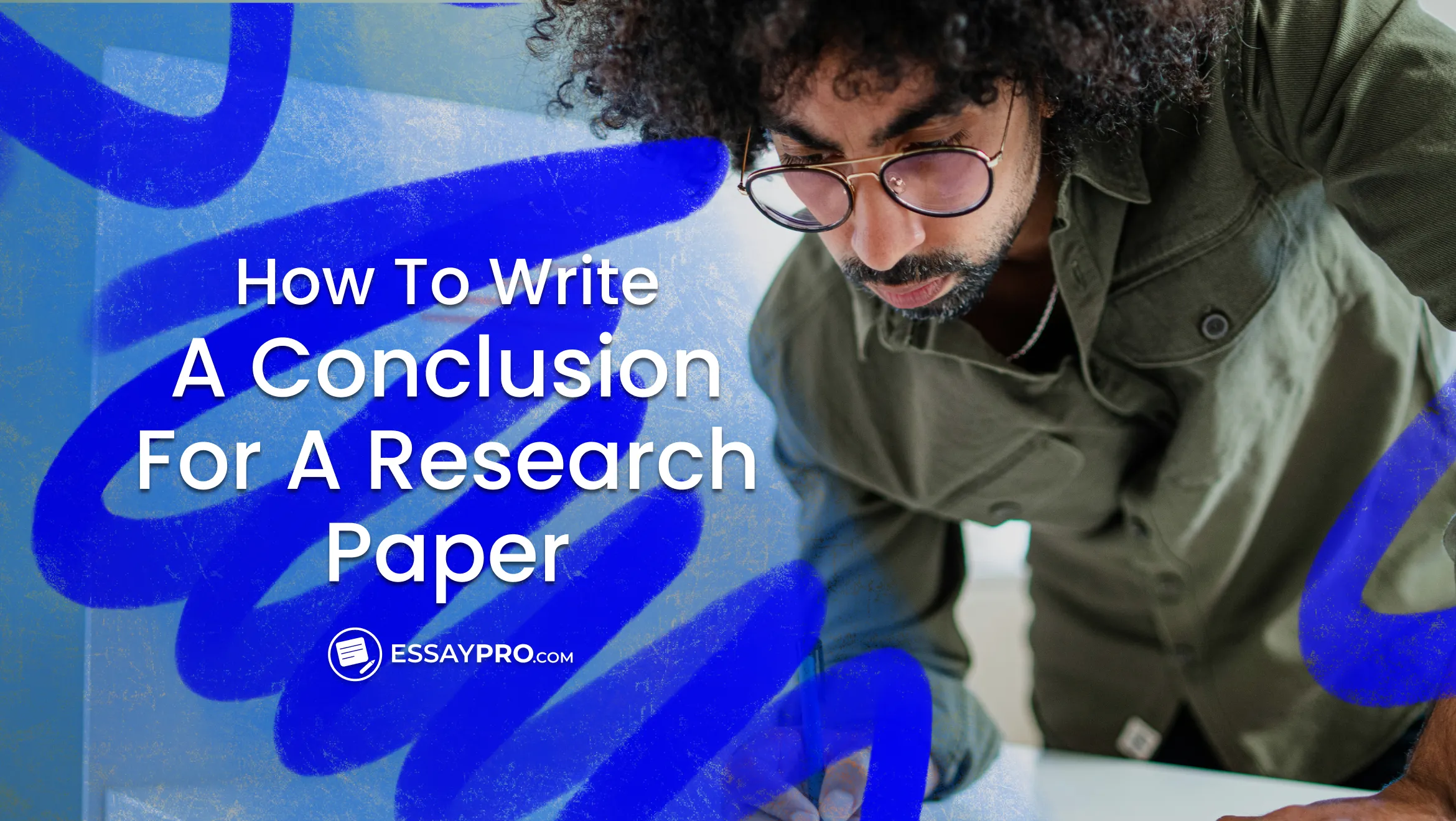The conclusion is the final paragraph of your writing, and it holds significant weight. It allows you to leave a lasting impression on the reader. But how to write a conclusion that effectively summarizes your points and resonates with your audience?
This article will guide you through the process of crafting a strong conclusion paragraph, step by step. Our term paper writers will break down the key elements and provide clear examples to illustrate each point. By following these steps and referencing the examples, you'll be well on your way to writing impactful conclusions that leave your reader feeling satisfied and informed.
What Is a Conclusion
Conclusion in an essay is the final paragraph or section that wraps up the main points and provides closure to the piece.
Imagine it as the bridge that connects your ideas to a broader significance. A well-crafted conclusion does more than simply summarize; it elevates your points and offers a sense of closure, ensuring the reader leaves with a clear understanding of your argument's impact. In the next section, you will find conclusion ideas that you could use for your essay.


How to Write a Conclusion
A powerful conclusion not only summarizes but also reinforces your message and leaves a lasting impression. Here's a breakdown of how to write a conclusion for an essay:
- Restate Your Thesis: Briefly remind the reader of your central point. Don't simply copy and paste your thesis statement, but rephrase it using different words.
- Summarize Key Points: Revisit the main arguments or evidence you presented throughout your writing. This reminds the reader of the journey you took them on and ensures they grasp the core takeaways.
- Avoid Introducing New Information: The conclusion is not the place to introduce brand new ideas. Stick to summarizing and reinforcing the existing points.
- End on a Strong Note: Go beyond a simple summary. You can add a final thought, pose a question to spark further reflection, or highlight the significance of your topic.
Read more: Persuasive essay outline.
The Purpose of a Conclusion
As you already understand, the conclusion paragraph serves a critical function in your writing. It serves as a final push to solidify your message in your readers’ minds. It's also your opportunity to:
- Remind the reader of your central point (thesis) and the key arguments or evidence used to support it.
- Use this space to offer a final thought, pose a question that prompts further pondering, or emphasize the significance of your topic.
Remember, a concluding paragraph should NOT:
- Introduce New Information: The conclusion is not the place for brand new ideas. Its purpose lies in wrapping up and reinforcing what you've already established.
- Stray from the Thesis: Don't introduce arguments or evidence not discussed earlier in your writing. Maintain focus on the core message you've been building throughout your work.
How Long Should a Conclusion Paragraph Be
Generally, the ideal length depends on the overall length and complexity of your essay. However, it is not the sole factor. A well-written conclusion of 3 sentences can be far more effective than a rambling one that drags on for multiple paragraphs.
Here are some general guidelines can help you achieve a balance when writing a conclusion:
- In most cases, you can effectively summarize your points and leave a lasting impression within 3-5 sentences.
- Prioritize delivering a clear and impactful message over unnecessary elaboration.
- Proportion matters. A lengthy research paper might warrant a slightly longer conclusion (think 5-7 sentences) to adequately address all the main points. Conversely, a shorter piece like a blog post might require a more concise conclusion (2-4 sentences).
What are the 5 Steps of a Conclusion
By following next 5 steps, you can craft a powerful conclusion that leaves a memorable impression on your readers:
1. Restate the Thesis or Main Idea 🎯
Start by paraphrasing your thesis statement or main argument. Avoid repeating it word-for-word; instead, rephrase it to remind readers of your central message while showing how you’ve developed it throughout the content.
- Example:
If your thesis was, “Online learning enhances accessibility and flexibility for students,” you could restate it as:
“In today’s fast-paced world, online education offers unmatched accessibility and flexibility, revolutionizing the way students learn.”
2. Summarize Key Points 📝
Briefly summarize the main points discussed in your body paragraphs. This reinforces your arguments and ensures readers remember the critical takeaways without introducing new information.
- Tip: Focus on the highlights of your essay or article to keep the summary concise and impactful.
- Example:
“From cost savings to personalized pacing, online education addresses challenges traditional learning struggles to solve.”
3. Emphasize the Significance 💡
Explain the importance of your topic or argument. Why does it matter? What impact does it have? Help readers understand the broader implications of your ideas.
- Example:
“By making education accessible to all, online learning has the potential to bridge gaps in education worldwide, ensuring that learning opportunities are no longer limited by geography or resources.”
4. Provide a Closing Thought or Call to Action 🚀
End with a strong final statement that resonates with your readers. This could be a thought-provoking insight, a question, a call to action (CTA), or a suggestion for future consideration.
- Options for closing thoughts:
- Inspire readers to take action (e.g., “Start exploring online courses to discover how digital learning can work for you.”).
- Pose a reflective question (e.g., “How can we further leverage technology to make education accessible to all?”).
- Offer a concluding insight (e.g., “Ultimately, the future of education lies in adapting to the needs of modern learners.”).
5. Keep It Concise and Impactful ✂️
A great conclusion is short, clear, and to the point. Avoid introducing new ideas or information—stick to wrapping up your content effectively. A strong conclusion leaves readers with something to think about or act upon without unnecessary fluff.
Conclusion Transition Words
The right transition word can smoothly bridge the gap between your main body of text and your conclusion. Here are some transition words for conclusion categorized by their purpose:
7 Tips for Writing a Conclusion
Having grasped the core functions and structure of a conclusion paragraph, let's check out some practical tips to elevate your closing statements. Here are 7 effective strategies to consider from our dissertation writer:
.webp)
- Vary Your Sentence Structure: Avoid a monotonous string of simple sentences. Use a mix of sentence structures (short, long, complex) to create a more engaging rhythm.
- Connect to the Introduction: For a cohesive feel, subtly tie your conclusion back to your introduction. You can reference an opening question you posed or revisit a key image you mentioned. Consider this tip especially when unsure how to start a conclusion.
- Embrace Figurative Language (Sparingly): There are different conclusion ideas but a well-placed metaphor or simile can help leave a lasting impression. However, use figurative language strategically and avoid clichés.
- Appeal to the Reader's Emotions: Did your writing highlight a pressing issue? Consider evoking emotions relevant to your topic when you want to know how to write a conclusion paragraph that tugs at the reader's heartstrings.
- Consider a Quote (if Relevant): A powerful quote from a credible source can add authority and depth to your essay conclusion. Ensure the quote aligns with your thesis and enhances your message.
- End with a Strong Call to Action (Optional): If your purpose is to persuade or inspire action, conclude with a clear call to action. Tell your reader exactly what you want them to do next.
- Proofread and Revise: Just like any other part of your writing, proofread your conclusion carefully. Ensure clarity and a smooth flow between your main body of text and the closing statement.
By this time, you already know how to write a conclusion for an essay. However, if you still need further guidance, buy essay from our expert writers anytime!
Do’s and Don’ts of Essay Conclusion
Let's now look at some simple tips from our online paper writing service to help you avoid common mistakes when writing a conclusion.
Conclusion Paragraph Examples
Here are three conclusion paragraph examples showcasing how powerful closings are crafted.
Recommended for reading: Nursing essay examples.
Summing Up
In closing, a strong conclusion is a must-have for any piece of writing. It reminds your reader of your main point and leaves them with a lasting impression. Here are some key things to reflect on how to write a good conclusion:
- Restate your thesis in a fresh way.
- Mention your key arguments.
- Leave a lasting thought or question.
- Consider your audience and tailor your ending to them.
- End with a strong statement.
Remember, a good conclusion is not merely about wrapping things up but rather about making your writing truly impactful.
Need Help with Your Essays?
Our service is the best assistant the money can buy – original and reliable.
FAQ
How To Write A Conclusion For An Essay?
To write a conclusion for an essay, restate the main points or arguments you've made in the body paragraphs. Summarize the key findings or insights you've discussed and emphasize their significance. Avoid introducing new information in the conclusion; instead, focus on reinforcing your main points and leaving a lasting impression on the reader. End with a thought-provoking statement, question, or call to action that leaves the reader with something to think about.
How To Write A Good Conclusion?
A good conclusion should leave a strong and memorable impression on the reader while effectively summarizing the main points of the essay. Start by restating the thesis statement in different words to remind the reader of the essay's main argument. Then, briefly summarize the key points or arguments made in the body paragraphs. Offer insights or implications based on the analysis presented in the essay, and consider the broader significance or relevance of the topic. End with a closing statement that leaves the reader with a sense of closure or prompts further reflection.
How To Write A Conclusion For A College Essay?
When writing a conclusion for a college essay, follow the same principles as for any other essay conclusion. Begin by restating the thesis statement and summarizing the main points or arguments discussed in the essay. Reflect on the significance of the topic and the insights gained from the analysis. Consider the implications of your findings and how they relate to broader issues or contexts. End with a closing statement that leaves a lasting impression on the reader and reinforces the essay's main message or takeaway. Make sure to tailor your conclusion to the specific requirements or expectations of the college or instructor.

Daniel Parker
is a seasoned educational writer focusing on scholarship guidance, research papers, and various forms of academic essays including reflective and narrative essays. His expertise also extends to detailed case studies. A scholar with a background in English Literature and Education, Daniel’s work on EssayPro blog aims to support students in achieving academic excellence and securing scholarships. His hobbies include reading classic literature and participating in academic forums.
- Essay Conclusions | UMGC. (n.d.). University of Maryland Global Campus. https://www.umgc.edu/current-students/learning-resources/writing-center/writing-resources/writing/essay-conclusions
- How to Write a Conclusion for an Essay | BestColleges. (n.d.). BestColleges.com. https://www.bestcolleges.com/blog/how-to-write-a-conclusion/
- Ending the Essay: Conclusions | Harvard College Writing Center. (n.d.). https://writingcenter.fas.harvard.edu/pages/ending-essay-conclusions

%20(1).webp)




